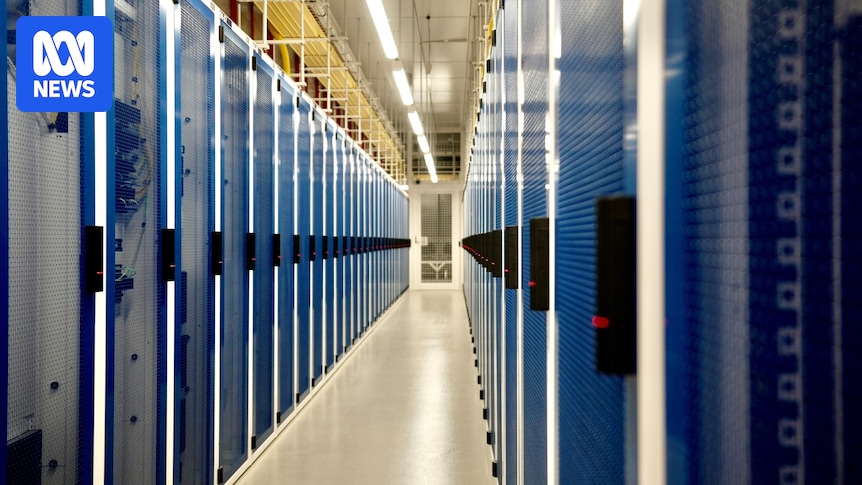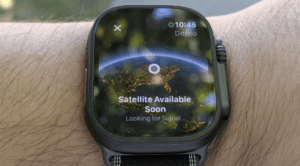
Data centres in Melbourne’s north and west are poised to consume vast amounts of drinking water, enough to supply 330,000 residents annually. This revelation has sparked fears of potential water shortages and constraints on new housing developments. Documents obtained through Freedom of Information laws reveal that Greater Western Water is evaluating 19 applications from data centres, requesting a total of 19,714 megalitres (ML) of drinking water each year.
One significant proposal in the Mt Cottrell area alone could use up to 3,926 ML annually, equating to the water consumption of 66,000 Melburnians, with peak demand reaching 321 litres per second. Greater Western Water, responsible for supplying water to Melbourne’s west, has already approved five of these applications, including a centre near Tarneit, allowed to consume up to 734.4 ML per year.
Data Centres’ Growing Water Demand
The potential water use of these 19 data centres is nearly 600 times the current consumption of 13 out of 15 existing centres in the area, which collectively used just 33.1 ML last year. Tim Fletcher, a professor of urban ecohydrology at the University of Melbourne, noted that 19.7 gigalitres would represent about 4% of Melbourne’s total water use, marking a substantial increase if approved.
“We really are at a crossroads,” Professor Fletcher said. “We’re now at a point where the combination of climate change, a growing population, and growing industrial use — including these data centres — mean we’re going to need substantial extra resources.”
Data centres are essential in the digital age, housing servers crucial for processing and storing data, including training models like ChatGPT. These facilities require significant water for cooling and account for about 5% of Australia’s total electricity consumption, a figure expected to rise to 8% by 2030.
Calls for Sustainability Standards
Ascelin Gordon, a senior lecturer in sustainability and planning at RMIT University, emphasized the need for stringent sustainability standards for data centres, especially amid the surge in cloud computing and AI. He suggested that data centres should be mandated to use recycled or non-drinking water and leverage their large structures to capture and use rainwater.
“Often they’ll be quite large structures, so there would be the capacity to catch fairly significant amounts of rainwater from that, before drawing on potable mains [drinking] water,” Dr Gordon said.
Greater Western Water acknowledged the challenge, stating they are exploring sustainable support options for data centre development. Kessia Thomson, the general manager of strategy and partnerships, highlighted ongoing collaborations with other water corporations and data centres to understand and minimize water usage while considering alternative supplies like recycled water.
Implications for Melbourne’s Water Security
Melbourne Water’s 2025 Annual Water Outlook indicates that current inflows into the city’s water storages are insufficient for its growing population. Victoria’s desalination plant, providing up to 150 gigalitres annually, serves as a crucial buffer, yet it is not seen as a sustainable long-term solution due to high energy consumption.
“These data centres are not just using very large volumes of water, but high rates of flow,” Professor Fletcher warned. “A pipe has a capacity to deliver a certain flow rate, and if you want to go above that, you either need to increase the pressure — which means you’ll start having damage in the network — or you need to increase the pipe sizes.”
The National Growth Areas Alliance expressed concern about the potential impact on residential development, noting parallels with Sydney’s Macquarie Park, where data centres have delayed new housing due to water supply strain. Bronwen Clark, CEO of the Alliance, highlighted the need for balanced infrastructure priorities.
Melbourne as a Data Centre Hub
Melbourne has been earmarked as a key hub for data centres, attracting investments from giants like Amazon and Microsoft. A report by Knight Frank identified Australia as a top data centre investment location, with Melbourne singled out for its power and land availability and a proactive approach to approvals.
NextDC, one of the companies investing in Melbourne, is incorporating water-saving measures such as stormwater retention basins and rain gardens in its facilities. A spokesperson emphasized their commitment to reducing water dependency and environmental impact through reuse, recycling, and recovery strategies.
The Victorian government supports data centre investments for job creation and economic growth, while balancing water and energy resources. Dr Gordon acknowledged the economic benefits but cautioned against overlooking environmental impacts.
“It’s this trade-off between jobs and economic growth, and the impact on the environment,” Dr Gordon said. “And the environment is the one that usually loses out.”
As Melbourne continues to develop as a data centre hub, the challenge remains to ensure that this growth does not come at the expense of the city’s water security and sustainable development.







